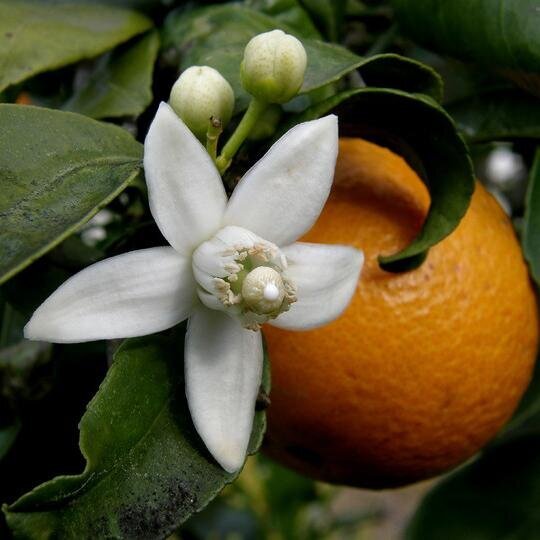FRESH GINGER TEA
Fresh ginger root served as a tea is a lovely folk remedy to aid digestion, relieve nausea, open sinuses, and help with headache pain. When I travel I actually take a knob of it with me in my bag just in case I experience any of those issues. If I am feeling perfectly fine, I still enjoy making a cup of tea or two to support my immune system from the stress of traveling and being on an airplane.
Like most folk remedies, there’s no single way to prepare fresh ginger tea. Recipes will vary from family to family, island to island, or even day to day depending what you have on hand. Some people slice the ginger into coins, others grate it like the way I like to make it at home.
When my husband was sick with a cold recently, I prepared him fresh ginger tea in the way I imagined his Trinidadian grandmothers would have made it—with a couple of cloves and a cinnamon stick. Feel free to use the recipe below as a base recipe and add to it spices such as cardamom pods, allspice, black pepper, cloves, cinnamon, citrus, lemongrass, pineapple.…
INGREDIENTS
1/2 cup *ginger root, grated (This is simply a rough estimate, use less or more depending how “spicy” you want it.)
4 cups water
honey to taste
METHOD
In a small saucepan add water and ginger. Bring to a boil, then turn heat down to a simmer. Cook for 10 minutes. Strain. Add honey to taste.
*I do not peel my organic ginger. I do, however, give it a good wash.
TIBICOS - TRUST YOUR GUT!
The origin of the tibicos has not been established quite yet, but it is speculated by some scientists that the grains originated in Mexico, where they developed on the pads of our beloved nopal cactus. As a storyteller, I am going to stick with that theory.
Tibicos, also known as water kefir grains, are strains of bacteria and yeasts which, when placed in a sweet solution begin to ferment. Fermentation is an ancient and simple technique found all over the globe to preserve food–which as a result creates “good” bacteria.
I am always in awe of Indigenous wisdom held all over the world that modern science is revealing today. Fermented foods and beverages are now shown to support our immune system, regulate our digestive system, as well as inhibit the growth of pathogenic microorganisms such as E. coli. And, if you’ve been following my work over the years, you know I believe that having a healthy gut somehow helps with having a strong(er) intuition.
Intimidating at first, once you get started making water kefir it’s actually quite simple. I prefer to make it in the warmer months as it ferments more easily and I prefer drinking it chilled. Lastly, when I have *raw sugarcane on hand, I enjoy using that versus simple cane sugar as it does have an earthier taste even though most of the sugar is transformed in the process. Your end result is a fizzy, slightly sour beverage fine on its own.
*Some examples of raw sugarcane are: Piloncillo (Mexico), panela (Colombia), or chancaca (Peru).
INGREDIENTS
4 cups spring water (I intentionally use spring water for the minerals and Phoenix tap water is not chlorine-free)
¼ cup sugar
3 tablespoon *tibicos (water kefir grains)
METHOD
In a small saucepan add two cups of the water along with the sugar of your choice. Heat the sugar and water over a low/medium setting, stirring until the sugar has dissolved. Remove pan from heat and add the remaining two cups of water. Your sugar water has to be room temperature before you can add your tibicos or you will kill them. I know, so dramatic.
Once cooled, place your water solution in a quart-sized jar, add the tibicos. Cover the jar with a lightweight kitchen towel, cloth napkin, or coffee filter secured with a rubber band. Place your jar in a warm spot in your kitchen (not a window) and allow the tibicos to work their magic. It will take about one to two days to ferment and you’ll know it’s ready when you begin to see little tiny bubbles on the surface. Strain the grains and bottle your liquid, being mindful that it’s now carbonated. Meaning, leave a little room at the top of your bottle and make sure the lid is on securely. I like reusing swing-top bottles for my homemade fermented beverages. You can keep the tibicos water in the refrigerator for up to one month.
To store your tibicos, add them to a glass jar with a couple spoons of sugar, put the lid on and keep in the refrigerator until you are ready to make another batch of fermented tibicos water.
*Tibicos/water kefir grains can be found at some natural grocery stores and online
HOMEMADE CASHEW MYLK
Although I am not vegan, I still enjoy making cashew nut mylk because it’s easy and tastes deliciously creamy. Cashews are catergorized as a tree nut, but they are really a seed. Confusing, yes. So, if you are allergic to tree nuts you may have a risk of being allergic to cashews.
Besides being full of antioxidants, cashews are rich in minerals such as copper, magnesium, and manganese. And like nuts, they may improve heart health and lower the risk of strokes. When I was playing Capoeira Angola regularly, we would sing a song about the cashew tree. It was one of my favorite songs of the game and it just came to mind as I was creating this post. I will share it below :)
Anyhow, it’s really simple to make your own creamy cashew mylk, just be sure to soak your cashews as soaking helps with them being more digestible. You can use it in coffee, oatmeal, or in my papaya batido recipe here.
INGREDIENTS
1 cup raw (unroasted) cashews
4 cups water, preferably filtered or spring
1 teaspoon vanilla extract (optional)
METHOD
Soak cashews overnight in water, then drain. Add the plump cashews, 4 cups of water, and vanilla extract (if using) to a blender. Blend on high until rich and creamy. Pour into a container and keep in the refrigerator. Use within 3 days.
FRAGRANT SIETE AZAHARES
Siete Azahares, or Seven Blossoms, is an herbal tea blend served in many Mexican homes for stress and insomnia made with plants known for their relaxing qualities. There are countless blends, however, virtually all Seven Blossoms blends will contain linden and passionflower. The tea blend can be found at most Mexican grocers and botánicas, however, making your own blend is simple, not to mention, it tastes more flavorful than pre-bagged varieties and is very fragrant!
I’ve created several blends over the years, making adjustments here and there depending on what I have on hand–such as drying my own orange blossoms when they’re in bloom here in Phoenix. So, if you don’t have all of the following blossoms, use your intuition using what you do have on hand and can find in your neighborhood. It’s okay if your tea blend comes out being Cinco Azahares :)
The following recipe is made using only dried ingredients. It stores well in a glass jar and makes a great gift for anyone feeling stress–which means you may be making a gift for yourself.
INGREDIENTS
1-part dried hops
1-part dried lavender
2-parts dried lemon balm
1-part dried linden
1-part dried jasmine or orange blossoms
1-part dried passionflower
1-part dried rose petals
METHOD
Decide how much you want to make, measure out your herbs, adding them to a bowl and mixing them gently with your hands. If you want to make a small amount, I would suggest using one tablespoon as one “part”.
Label and store your blend in an airtight container in a cool, dry place. Prepare and serve just as you would any loose herbal tea (French press, tea ball, etc) and do your own research if you have any concerns about consuming any of the herbs based on your current condition.
CHICKEN BONE BROTH FROM SCRATCH
One of the requests I receive most often is to share my recipe for caldo de huesos de gallina, chicken bone broth. I have shared this recipe so many times via text or email, that I decided to put it on my website. It’s one of those recipes that is very loose, meaning you really cannot go wrong. This is old world kitchen medicine, using what you have on hand buying the best your budget can afford. I add a pinch of sea salt and drink a warm mug of it a couple times a week for the collagen benefits, which is why I put this in the DRINK section of my recipes, however, I use it as well for the base of many of my soups. Don’t be tempted to use chicken breasts as this is a bone broth, use the boniest pieces you can find.
Who knew bone broths would be so trendy now, as many abuelitas in my culture have been preparing bone broths for countless generations. However, since I am not much of a meat eater, I never have a roasted chicken carcass to make the broth as many abuelitas do–which is why I use the following recipe. If you would like a recipe on making bone broth from a roasted bird, you can find that here on my Nourished Mamá page.
INGREDIENTS
1 lb. chicken feet
1 lb. chicken necks, backs, or wings
1 white onion, peeled, sliced in half
3 - 4 carrots, trimmed, cut into large pieces
3 - 4 celery ribs, trimmed, cut into large pieces
1 whole head of garlic
splash of apple cider vinegar
water
METHOD
Add your chicken and vegetables to a large stock pot. Fill the pot with water (about 4 liters), add a splash of vinegar. Bring the pot to a boil, then turn the heat down to simmer, slightly covered with a lid, for a few hours. I keep the lid ajar so that some steam escapes, keeping it at a simmer versus a rolling boil. You want low and slow.
You may need to check on it now and then to skim the top and add a little more water. After a few hours simply turn off the heat, let it cool for a little bit, then strain the broth. I like to reuse jars for my broth, just let the broth cool before placing a lid on them. Store in the refrigerator and use within the week.
The broth also freezes very well in freezer bags or glass jars with lots of room at the top (don’t fill it up). After the broth has cooled overnight in the refrigerator, you will have a delicious gelatinous broth.
If you have a dog like I do, he smells when something is up. In this case, when I am making bone broth he sits there staring at me as knows he gets the deboned neck meat.
LEMON + CINNAMON TEA
El limón con la canela
la rosita con el jazmín
así me huelen tus carnes
cuando yo me arrimo a ti.
Lemon with cinnamon
Rose with jasmine
this is how you smell to me
when I get close to you.
A letra por tientos sang by Antonio Agujetas
I had a very unique upbringing in that I started ballet folklorico (Mexico folk dance) and flamenco at the same time around age six. I think my mom recognized I loved dancing and was trying to put me in different styles to see what I liked best.
I resonated with la flamenca straightaway and so it would be flamenco that I chose to study well into my twenties. Romani history, style of clothing, culinary ways, and of course their music, captured my curiosity early on. So, when the opportunity for me to stay in Andalucía at age 28 came about, I had the privilege to sit with two grandmothers (mother and daughter) who were descendants of gitano Romanis. They lived directly behind my little apartment in the old white village where I was staying–and if you are a flamenco enthusiast, it was the town where Camarón de la Isla’s father was born.
Listening and learning about the suffering their ancestors had endured was eerily familiar to my own. Under the Christian Reconquista of Spain they too were seen as “less than”. They were denied their language and rituals, their settlements were broken up, their foods changed, they were required to marry non-Roma people, and by the 17th century many of them were actually deported to the Americas. This trauma deeply affected their people and it is was still very noticeable. While trekking around southern Spain in 1999, I could plainly see that many Romani people were living in utter poverty depending on which neighborhood I was visiting. And yet, on these drives to different towns and villages–flamenco was always such a part of my experience with its music being played in cafes, bars, or on the beach. Flamenco is a Romani cultural expression, a way of expressing pain through dance, yet, it was this dance form that Spain had adopted as its own identity.
Spending time with these women in their home, listening to them tell stories of family (with my Spanish dictionary in hand or with another visitor translating as I am not fluent in Spanish), I realized we shared a very similar painful history as well as beautiful examples of resilience. Their grandchildren were in school, they were growing food at a nearby plot, they owned the home they lived in, and they were trying to keep their culture alive with their children. I think they saw something familiar in my eyes because we built a relationship of trust during those visits. They were extremely curious about me and would invite me over to learn how to prepare different dishes, and in exchange, I would teach them something. On that note, one of the dishes I taught them was New Mexico red chile sauce. It was very hard to come by dried red chiles that were actually “hot” in that town, but we worked with what we had and made the sauce. We also made flour tortillas but that’s another story.
I became a little fly on the wall as I would sit on the patio with them after lunch, listening to an old radio while they hung laundry out to dry or help water plants on patio. In hindsight, I now see how those homey little moments were such a treasure.
This is a very simple tea prepared with everyday aromatics found in many Andalucían kitchens (and now many Mexican kitchens) perfect in supporting our immune systems. I drank it on occasion while staying in Conil de la Frontera, when the grandmas had it going on the stove. They made it in a medium-sized pot and would warm the pot up as needed. They had mint growing in their tiny courtyard patio, and I believe the mint was a spearmint, but any mint variety should do. Oranges and lemons grow all over southern Spain, so I am sure the lemons were local. Be sure to wash them well if they are not organic, as you are preparing the tea with the peeling.
As with all herbal preparations, empower yourself by doing your own research on whether or not any herbal preparation is best in your current physical condition. I think it tastes delicious.
8 cups water
1 large or 2 small lemons, quartered
1 handful yerba buena (mint leaves)
5 sticks of canela (cinnamon)
Honey for serving
Fill pot with water
Add lemon, mint, and cinnamon sticks
Bring water to a boil
Reduce heat and simmer for half an hour
Keep tea on the stove like the grandmas did to drink throughout the day, or, store in refrigerator for later use by straining the liquid and storing it in a glass bottle/jar. Serve warm with honey.
MEDICINE WATERS
I had the pleasure of sharing two of my medicine water recipes on a show called The List! The recipes are very different in flavor and texture, with the mango water being detoxifying and anti-inflammatory, while the prickly pear + rose falls more on the delicate side and is good for your emotional heart. They are both great for glowing skin as they are both hydrating and full of Vitamin C. See the recipes below, and if you want to see The List segment, it’s linked at the bottom of this entry.
MANGO MEDICINE WATER
Serves 2
SPECIAL EQUIPMENT
Blender
INGREDIENTS
· 2 cups diced mango
· 3 cups water
· ⅓ cup lime juice
· 1 T. chia seeds
· 1-inch knob of fresh ginger, chopped
· Natural sweetener to taste if needed (honey, stevia)
METHOD
1. Working in batches if necessary, place all of the ingredients in the pitcher of a blender. Blend until smooth, about 2 minutes.
2. Taste for sweetness, adding natural sweetener if desired. Serve chilled or over ice.
PRICKLY PEAR + ROSE MEDICINE WATER
Serves 2
SPECIAL EQUIPMENT
Blender, fine mesh strainer
INGREDIENTS
· 3 green *prickly pears
· 3 cups water
· 4 large mint leaves
· 1 large lime, juiced
· 1 T. organic, dried rose petals
· Natural sweetener to taste (honey, stevia)
METHOD
1. Peel prickly pears by cutting off about ½ inch from each end. Then slice about ¼ inch through from one end to the other lengthwise, cutting through thick skin. Carefully remove the entire skin by hand. It should come off easily in one piece and leave the fruit in-tact.
2. Blend prickly pears and mint with 3 cups water.
3. Strain mixture through a fine-mesh sieve into large pitcher. Add lime juice, rose petals, and natural sweetener to taste. Stir.
4. Serve chilled or over ice.
*Green prickly pears, known as tuna in Spanish, can be found at most Mexican grocers along with the more common red prickly pears.
SURYA CHIKITSA

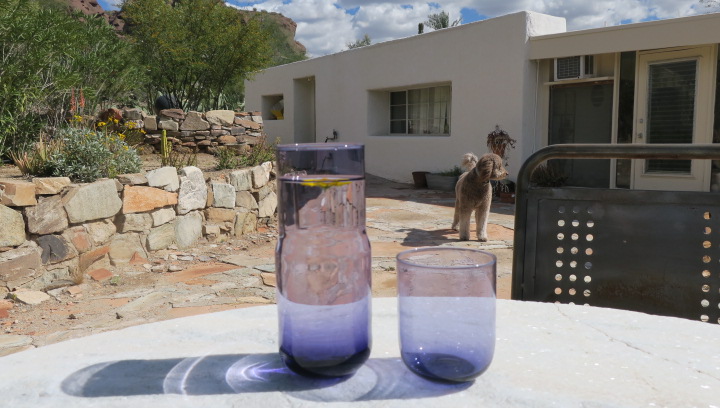
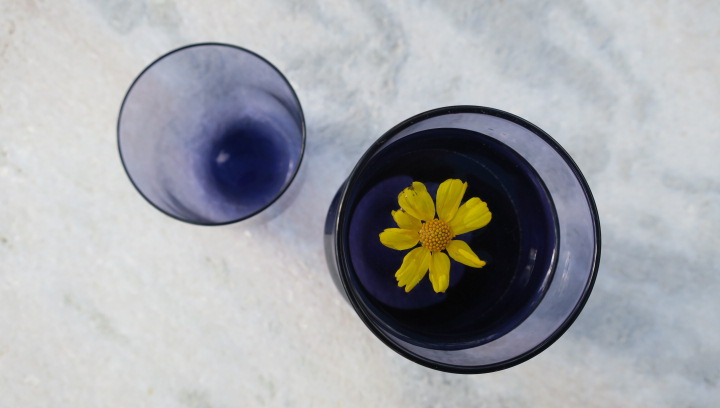
This may seem like a silly post, but it's actually in response to one of the questions I receive most often: “Do you have any suggestions on how I can drink more water?”.
In my early twenties one of my Ayurvedic teachers taught us about Surya Chikitsa, a natural treatment using the sun. He discussed how filling colored glasses of water and placing them in the sun allowed the water to be solarized and absorb the healing properties of the color. Since then, I have started drinking my water out of colored glasses or bottles once I understood their color frequencies as related to the to the *chakras.
If I'm feeling a bit extra and have a moment to add a fresh edible flower, or a fresh sprig of mint or basil, I will add that too - which makes water drinking seem more like a ritual than a necessity. Water is our first medicine.
Right now I am drinking water from a purple glass carafe with a yellow brittle-bush flower from my yard. Purple-Violet as it relates to the chakra system reinforces Divine Realization and stimulates creative imagination. Perfect for writing this post.
HOW TO SOLARIZE YOUR WATER WITH THE COLOR FREQUENCIES
Decide which chakra you want to work with and choose your color accordingly
Get a glass in the color of the chakra you want to work with.
Fill the glass with water (preferably spring water if you have access to it) and place it in the sun.
Allow it to sit there for at least an hour. The sun's rays will have infused the water with the vibrations of the colored container.
I then incorporate that water with the rest of my water I intend to drink on that day.
The word chakra is derived from the Sanskrit word meaning “wheel”. In both Buddhism and Hinduism the chakras are represented by colourful wheels along the spine from the base to the top of the head. You can learn more about them HERE.
MASALA CHAI + SLIPPERY ELM BARK
Slippery elm, or Ulmus rubra, is a tree native to North American from Texas to Manitoba, and from Florida to Quebec.
It has been used for generations by Indigenous people of that region by peeling its slimy, red inner bark from twigs and branches and using it as a remedy for many common ailments, like fevers, wounds, and sore throats. When made into a powder and mixed with water (in this case chai), it generates a sticky material known as mucilage, which is very soothing to the throat.
I thought it would be the perfect addition to my Masala Chai that I prepared for my friend Tina Estes who uses her voice to sing. You can read about my visit with Tina HERE!
INGREDIENTS
2" piece of ginger, cut into small pieces
2 cinnamon sticks
2 teaspoons black peppercorns
5 whole cloves
1 teaspoon fennel seeds
10 green cardamom pods, lightly crushed with the back of a large spoon
6 cups water
6 teabags of Darjeeling tea, or 2 teaspoons of loose Darjeeling tea
2 cups of your favorite milk (we used hemp milk)
1 tablespoon *slippery elm bark
Honey to taste
INSTRUCTIONS
Combine first 6 ingredients in medium saucepan. Add 6 cups water; bring to boil over high heat. Reduce heat to medium-low, partially cover pan, and simmer gently 10 minutes. Remove from heat. Add tea bags or loose tea and steep 5 minutes. Add milk. Bring tea just to a simmer to warm the milk. Stir or whisk in the slippery elm bark. Strain the masala chai into a teapot and serve warm with honey.
*Slippery elm bark can be found in most herbal apothecaries or here at Mountain Rose Herbs
NOTE
Orally administered medications should be taken one hour prior to or several hours after consumption of slippery elm as the mucilage may slow the absorption of orally administered drugs. Although considered very safe, I recommend that you consult with your healthcare practitioner before using herbal products, particularly if you are pregnant, nursing, or on any medications.
MATCHA WITH LIME + ROSEWATER
I love how delicate matcha is in appearance, but its flavor profile is quite the opposite. It has a unique, complex flavor, that is full of depth with a nod of sweetness. My favorite description for this Japanese green tea, is that it should taste like Buddha :) It is a potent tea, full of antioxidants called polyphenols, which have long been tied to protection against heart disease and cancer. It has also been noted as a potential thermogenic useful for increasing metabolism, controlling blood sugar levels, maintaining healthy cholesterol levels, reducing inflammation as well as aiding immune and detoxification processes. Yes, yes, and yes. So if your'e not sensitive to caffeine, this is a great tonic.
Matcha translates as "powdered tea" and is traditionally blended with water using a bamboo matcha whisk to break up the clumps and froth the tea for drinking. I do not have one of these bamboo whisks, however, I do have molinillos! A molinillo is a wooden tool which has been used for generations to froth cacao in Mexico. I tried it with my matcha and it worked perfectly! Alternatively, you could use a jar with a lid and give it a really good shake, but there's something really energetic about using old tools like a molinillo. I paired the green tea with a splash of rosewater, because I LOVE the contrast against the earthy notes, but you can surely leave it out if sipping on roses in not your desire and you're not reminiscent of Tita in Like Water For Chocolate. I find it quite magical.
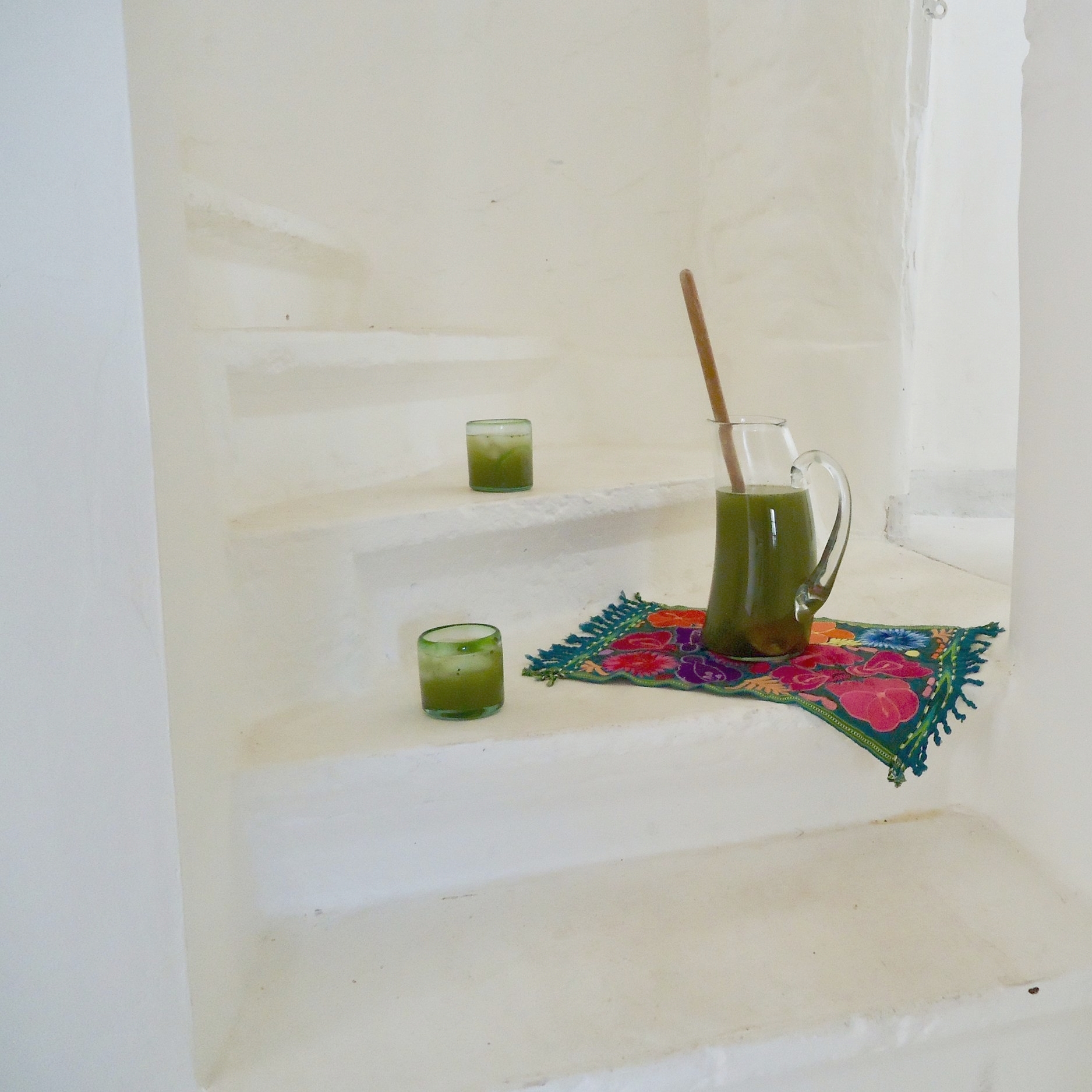
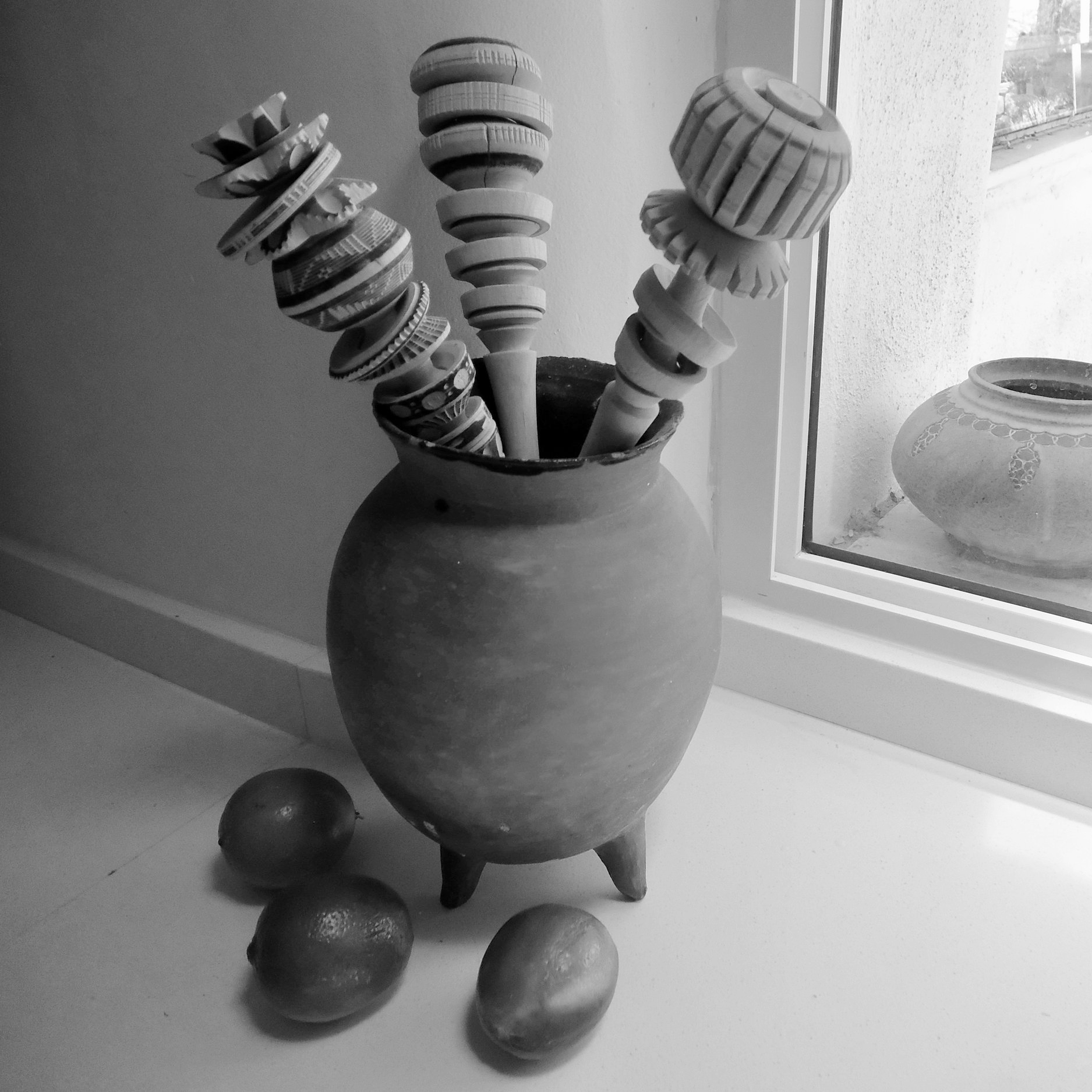

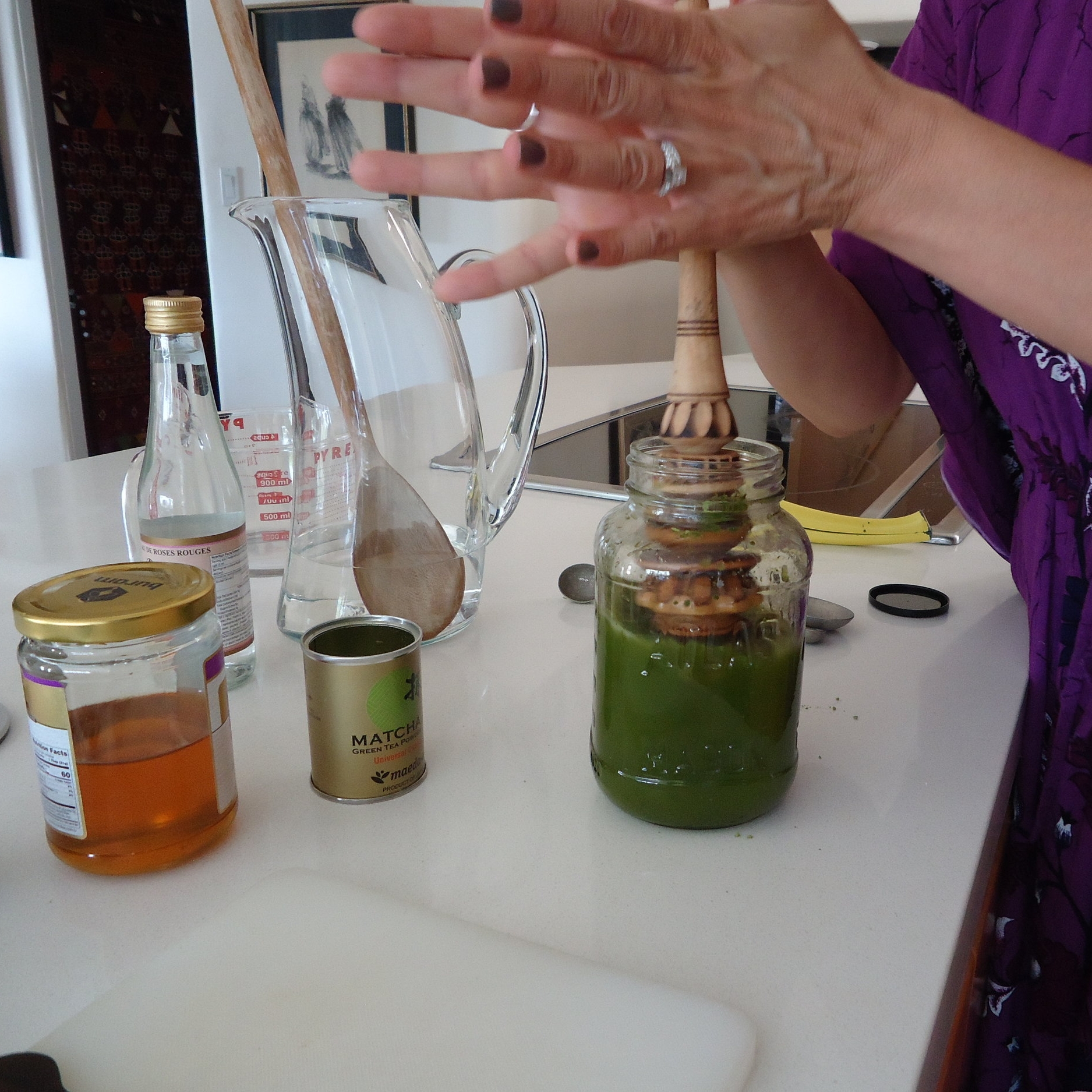
8 C. water, preferably filtered or spring water
2 tsp. matcha
1/2 - 1 tsp. *rosewater
1/4 - 1/2 C. runny honey to taste
3 **limes, juiced
In a wide mouth jar place 1 - 2 cups of the water along with the matcha. Use your whisk, molinillo, or place the lid on the jar and shake, to thoroughly break up the matcha.
In a large pitcher, add the remaining water, the blended matcha, honey, rosewater, and lime juice. Stir.
Refrigerate and serve chilled.
*You can find rosewater in most Indian and Middle Eastern grocery stores
*You can substitute 2 medium lemons for the limes
MAGGIE'S FRAGRANT JASMINE TEA
The following loose recipe and photo instructions are on how to prepare Maggie Mahboubian's beautifully flavored jasmine tea that she prepared for me and my daughter during our Meet + Eat. She took a moment to illustrate what a traditional samovar looked like, which is how true Persian tea is prepared and kept warm for all-day drinking. For this recipe, I did my best to capture for readers how to prepare it using a makeshift samovar using a porcelain teapot and a tea kettle of simmering water.
You can read more about Maggie and my visit to her home studio HERE.








MAGGIE'S FRAGRANT JASMINE TEA
You will need a porcelain teapot, a tea kettle, and possibly a small pot of water. See instructions below.
1 handful fresh jasmine blossoms
1 good-sized handful of long Persian tea leaves
About 5 cups of water depending on the size of your tea kettle
milk of your choice if desired
sugar or honey if desired
INSTRUCTIONS
1. Boil water in a tea kettle. While that is coming to boil, place the tea leaves in the porcelain teapot. Once the water has reached a boil, pour boiling water into the porcelain teapot.
2. Put the lid on the teapot. Next, if your tea kettle has a lid that can be removed, take off the lid and place the porcelain teapot on top of the tea kettle to keep warm and steep the tea leaves. (You may need to add more water to your tea kettle and place it back on the flame/heat). Alternatively, you can set the porcelain teapot on top of a smaller simmering pot of water. The heat from the simmering water in the tea kettle or in the pot, keeps the porcelain teapot warm so that you can use the tea concentrate all day. Maggie said this method does not taste bitter and that it actually breaks down the tannins in the tea.
3. To serve, place a few jasmine blossoms in a cup. Using a mesh strainer to catch the tea leaves, pour some of the tea concentrate from the teapot into your cup (about a quarter of the way up). Then, top with boiling water to dilute it to your desired strength. You can add milk of your choice, honey, and/or sugar to taste.
Maggie said if you don't have access to fresh jasmine flowers, you can substitute orange blossoms, also mentioning that dried jasmine blossoms don't retain the same flavor as fresh.
DESERT HERB AND FLOWER ICED TEA
*DESERT HERB AND FLOWER ICED TEA
I T. dried Desert Lavender
1 T. dried Estafiate
1 T. dried Yerba Mansa
2 T. dried Dandelion Leaf
2 T. dried Nettle Leaf
1 T. dried Rose Petals
1 T. dried Chamomile
1 T. dried Oatstraw
Combine all of the herbs together in a bowl, store in a glass jar with a lid.
To Brew:
Steep 2 T. of the herbal blend in 2 - 3 cups of hot water, 15 - 20 minutes. Allow infusion to cool slightly, pour over ice.
Serve with honey and lemon if desired.
Bulk herbs can be purchased at Mountain Rose Herbs, or, you can purchase tea already blended from Desert Tortoise Botanicals in Tucson, Arizona.
*This recipe was prepared for my Meet + Eat with flamenco dancer Angelina Ramirez.
BOUGENVILLEA FLOWER WATER WITH HIBISCUS
BOUGAINVILLEA FLOWER WATER WITH HIBISCUS
SERVES 6
8 C. water
4 handfuls fresh bougainvillea (flowers and leaves*)
1 C. dried Jamaica flowers (hibiscus)
½ C. honey
Rinse flowers briefly to remove any impurities. Drain. Place flowers in a saucepan with water. Bring water to a boil, reduce heat, and simmer for 10 minutes. Remove pan from heat, add honey, and stir until dissolved. Allow mixture to cool
for about 15 minutes. Strain flower water into a pitcher. Chill. Serve with ice and bougainvillea blossoms to garnish.
*Clusters of small, white flowers surrounded by colorful, often magenta or orange, leaves known as bracts.
SPICY AYURVEDIC GOLDEN MILK
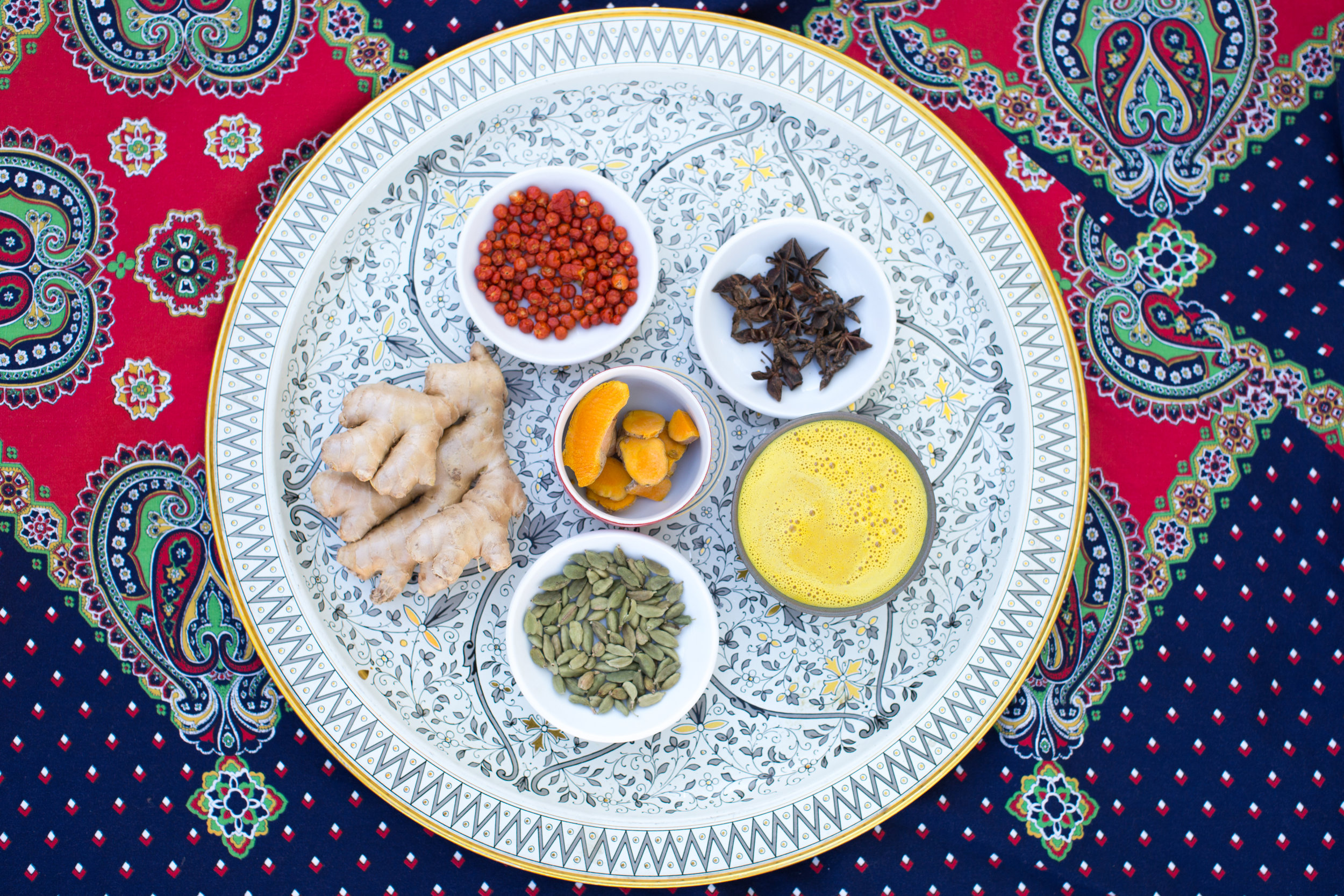

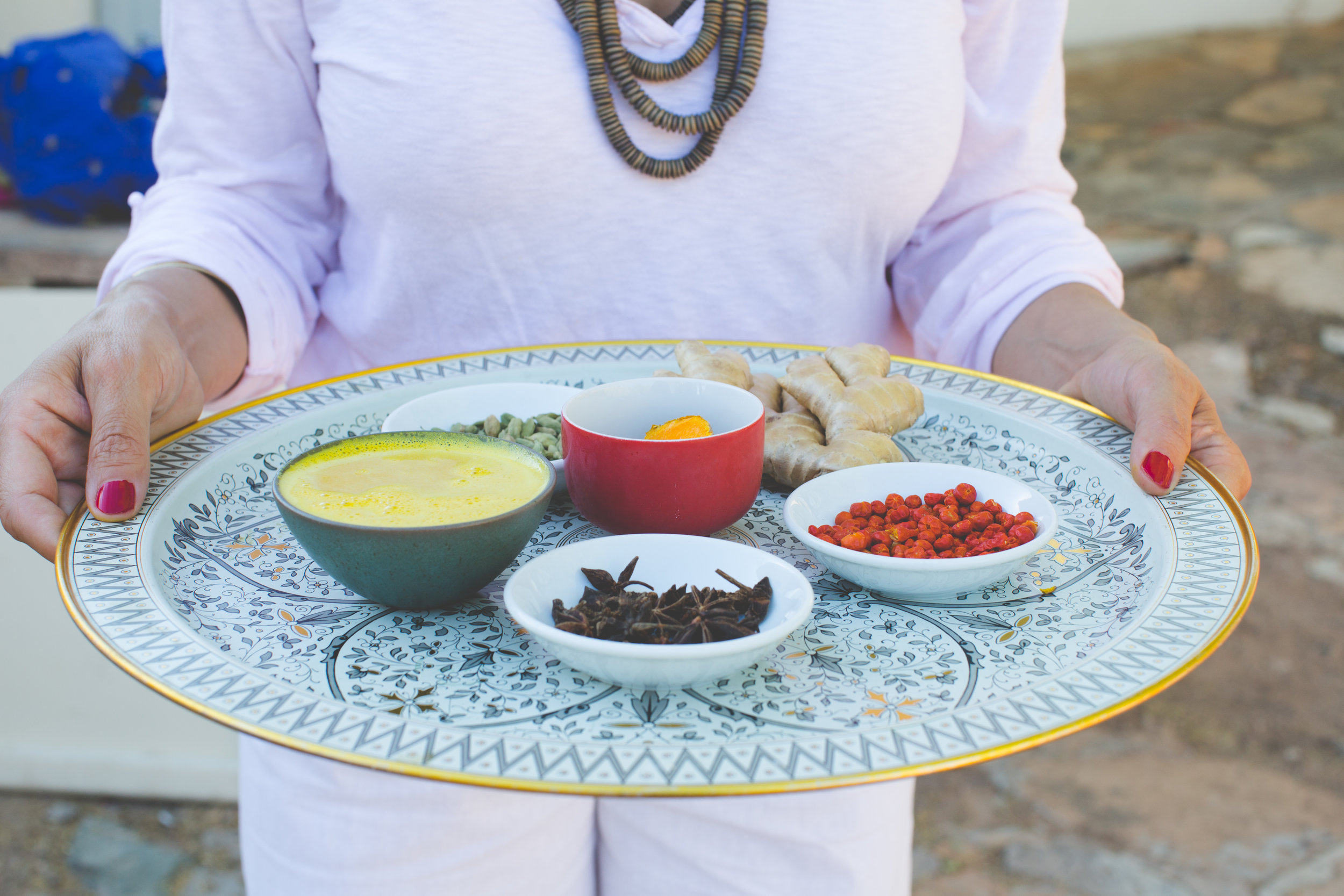
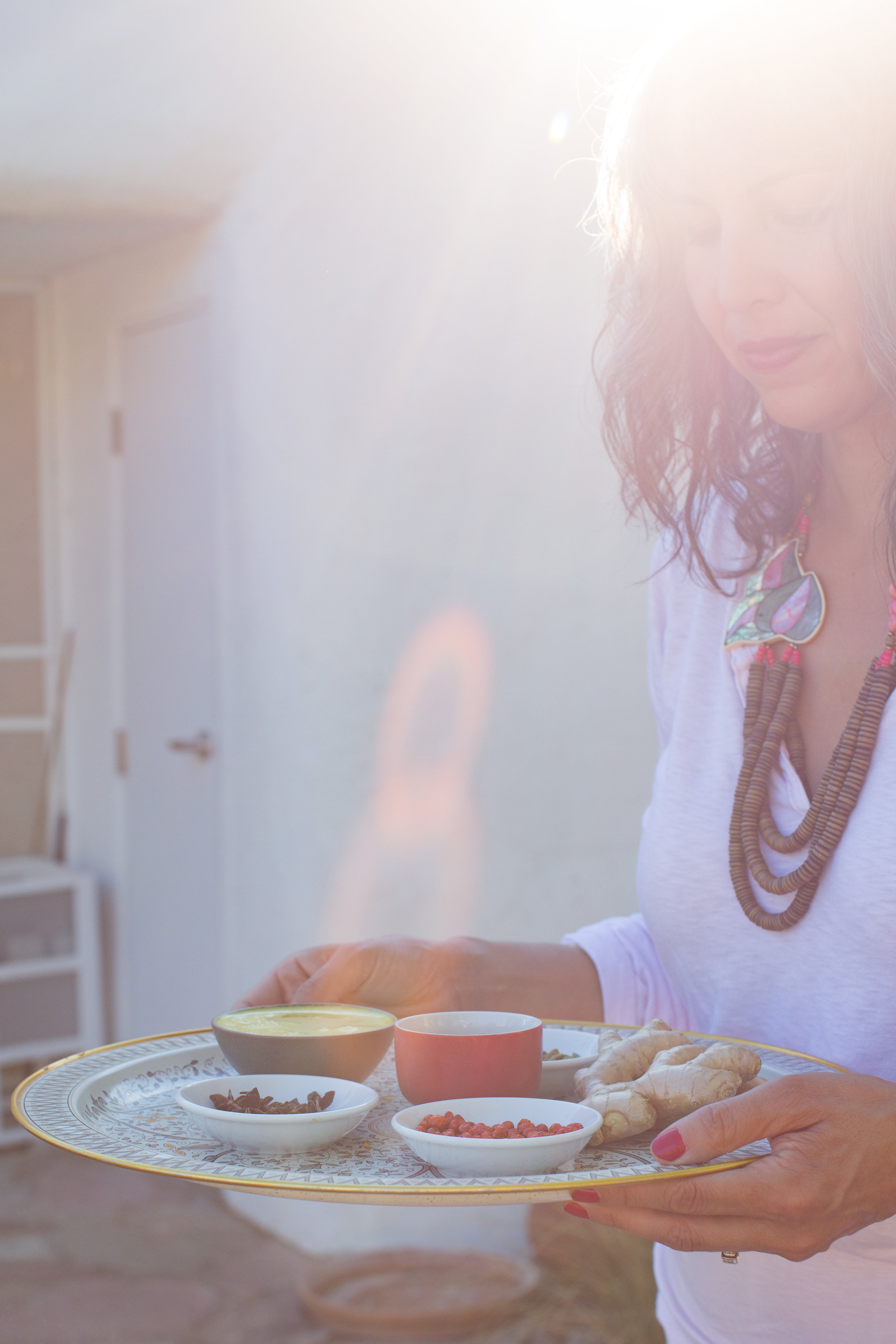
SPICY AYURVEDIC GOLDEN MILK
SERVES 2
2 C. milk of choice – I use unsweetened hemp milk
2 gently crushed green cardamom pods OR 1/4 tsp. ground cardamom
1 star anise
1” piece of fresh ginger
1 tsp. ground turmeric
1 chiltepin, crushed (optional)
a nice grind of fresh black pepper
½ tsp. pure virgin coconut oil
1 T. raw honey
Heat the milk gently with the cardamom, ginger, star anise, and chiltepin (if using), whisking in the turmeric, pepper, and coconut oil. Heat until steaming but not boiling and allow herbs to simmer about 10 minutes. Strain. Add honey, stir.







